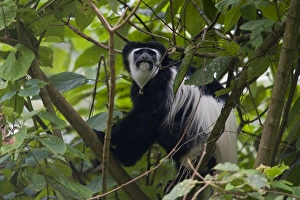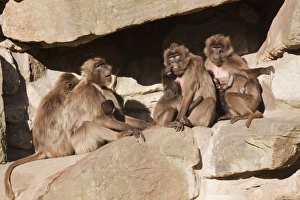Haplorrhine Collection
"Haplorrhines: A Glimpse into the Fascinating World of Primates" Discover the enchanting world of haplorrhines, a diverse group of primates that includes Tarsius
All Professionally Made to Order for Quick Shipping
"Haplorrhines: A Glimpse into the Fascinating World of Primates" Discover the enchanting world of haplorrhines, a diverse group of primates that includes Tarsius, Mantled Guereza, Gelada baboons, and more. Found across different continents like Africa and Asia, these remarkable creatures captivate us with their unique behaviors and stunning appearances. In the lush forests of Arusha National Park in Tanzania, Africa, we encounter the Mantled Guereza. With its striking black-and-white coat contrasting against the vibrant greenery, this primate genus can be spotted gracefully moving through trees. Traveling to Naturzoo Rheine in North Rhine-Westphalia, Germany, Europe brings us face-to-face with Gelada or Gelada baboons. In their tight-knit groups accompanied by adorable young ones, they exhibit social dynamics that are both intriguing and heartwarming. Venturing further east to Tangkoko Reserve in Sulawesi Island, Indonesia unveils another member of the haplorrhine family - Spectral Tarsiers. These nocturnal creatures come alive at night as they sit perched on branches or emerge from tree holes. Their large eyes gleam under moonlight as they skillfully catch katydids for nourishment. Meanwhile in Bohol Island within the Philippines lies an equally captivating species known as Philippine Tarsiers. These tiny primates cling onto tree trunks with their long fingers while surveying their forest habitat with intense focus. Whether it's witnessing a Spectral tarsier feeding on a katydid or observing them silently sitting amidst dense foliage during nighttime excursions; haplorrhines never fail to mesmerize us with their intricate lives. As we delve deeper into understanding these incredible creatures' behavior patterns and ecological roles within their respective habitats; one thing becomes clear - they are not just fascinating animals, but also a vital part of our planet's rich biodiversity.






